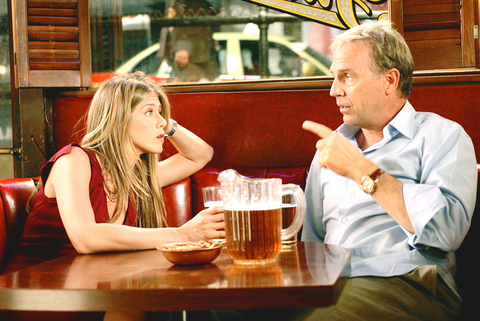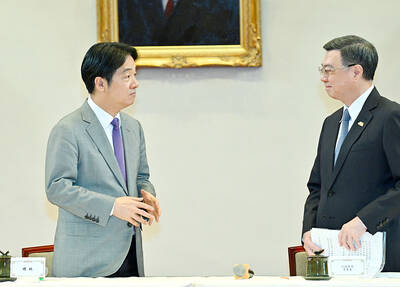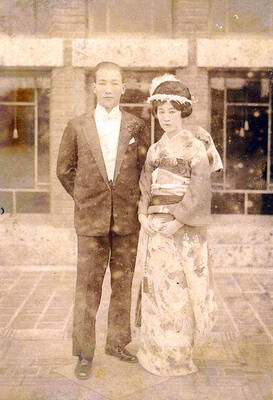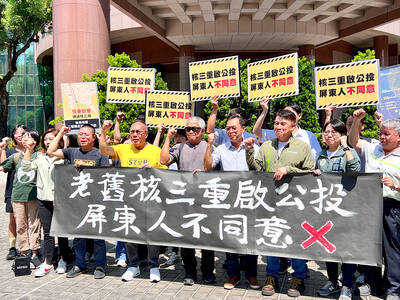Rumor Has It abounds with overt movie references, most of them to The Graduate. The premise, you see, is that a former beau of the heroine's dead mother may have been the model for the hero of Charles Webb's novel The Graduate, which was of course the basis for the 1967 movie directed by Mike Nichols. Or, to put it more simply, Dustin Hoffman may have grown up into Kevin Costner, while Anne Bancroft might have aged gracefully into Shirley MacLaine.
We'll sort all that out in a moment. But the most striking thing about Rumor Has It, directed between naps by Rob Reiner from a script by TM Griffin, is how uncannily it resembles movies far more recent and, in general, less interesting than The Graduate. If you regret having missed the romantic comedies of last year, fear not: you can catch up with them, in digested, streamlined form, for the price of a single ticket.
MacLaine plays the grandmother of two mismatched sisters whose mother died when they were young, just as she did in In Her Shoes. Costner plays a somewhat less dissolute version of the mellow, bibulous midlife bon vivant he played in The Upside of Anger -- unless, that is, he is playing the same older man dallying with a younger woman that Steve Martin was in Shopgirl. And here's Mark Ruffalo, moping through another romantic sidekick role, just like in Just Like Heaven.

Not that I'm suggesting anything like plagiarism. An urban legend used to postulate a central kitchen underneath the streets of Manhattan, where all the city's takeout Chinese food was prepared. Out in Los Angeles, screenplays apparently emerge from a similar place, scooped from steam tables and shipped out to the multiplexes with fortune cookies wrapped in cellophane.
I suppose Rumor Has It could be worse, though at the moment I'm at a loss to say just how. MacLaine and Costner are seasoned professionals, giving lackluster laugh lines more juice than they deserve, and Jennifer Aniston is as plucky and engaging as ever. Her character, Sarah Huttinger, also works for The New York Times, and I'm loath to say anything mean about a colleague, even a fictitious one. But Aniston's efforts are wasted in a movie that can't even seem to sustain interest in itself.
Sarah is from Pasadena, apparently still an island of boozy Republican insularity in the great Southern California melting pot. In the flashbacks that set up the movie's conceit, we see an image of Barry Goldwater on a black-and-white television set in a local living room, a reference that foreshadows the Dole-Kemp bumper sticker on Sarah's dad's Cadillac. I hadn't seen those names in a while, but Rumor Has It is precisely -- and a bit oddly -- set in 1997, and it expresses intermittent nostalgia for that distant year. Costner's Beau Burroughs is a Silicon Valley Internet guru, first seen spouting visionary mumbo-jumbo in a San Francisco hotel buzzing with talk of revolution and IPO's. Beau is a pal of Bill Clinton (and perhaps, with regard to certain appetites, a kindred soul as well). Remarkably, no one thinks to mention Friends, though someone does tell Sarah that she'd make a good hair-care model.
The movie deals with the potential creepiness of its story -- Sarah, who starts out thinking that Beau might be her real father, winds up going to bed with him, just like her mother and grandmother before her -- by being insistently bland. Its idea of a joke is to repeat the phrase "blunt test-icular trauma" four or five times in a single scene. Some of the characters, notably Sarah's father (Richard Jenkins) and her younger sister (Mena Suvari), begin as easy targets for tired satire and then turn nice and soft. Nobody here fails to be nice, which is, I guess, nice -- though at the cost of being funny.
Buried deep inside this misbegotten project is the glimmer of an idea -- about the consequences of the sexual revolution, maybe, or the triumph of the suburbs, or the way novels and films borrow from and infiltrate real life. As MacLaine sourly says toward the soggy end of Rumor Has It, "Wrong movie!" That's an understatement; this picture is at least six wrong movies in one.

Under pressure, President William Lai (賴清德) has enacted his first cabinet reshuffle. Whether it will be enough to staunch the bleeding remains to be seen. Cabinet members in the Executive Yuan almost always end up as sacrificial lambs, especially those appointed early in a president’s term. When presidents are under pressure, the cabinet is reshuffled. This is not unique to any party or president; this is the custom. This is the case in many democracies, especially parliamentary ones. In Taiwan, constitutionally the president presides over the heads of the five branches of government, each of which is confusingly translated as “president”

Sept. 1 to Sept. 7 In 1899, Kozaburo Hirai became the first documented Japanese to wed a Taiwanese under colonial rule. The soldier was partly motivated by the government’s policy of assimilating the Taiwanese population through intermarriage. While his friends and family disapproved and even mocked him, the marriage endured. By 1930, when his story appeared in Tales of Virtuous Deeds in Taiwan, Hirai had settled in his wife’s rural Changhua hometown, farming the land and integrating into local society. Similarly, Aiko Fujii, who married into the prominent Wufeng Lin Family (霧峰林家) in 1927, quickly learned Hoklo (commonly known as Taiwanese) and

The low voter turnout for the referendum on Aug. 23 shows that many Taiwanese are apathetic about nuclear energy, but there are long-term energy stakes involved that the public needs to grasp Taiwan faces an energy trilemma: soaring AI-driven demand, pressure to cut carbon and reliance on fragile fuel imports. But the nuclear referendum on Aug. 23 showed how little this registered with voters, many of whom neither see the long game nor grasp the stakes. Volunteer referendum worker Vivian Chen (陳薇安) put it bluntly: “I’ve seen many people asking what they’re voting for when they arrive to vote. They cast their vote without even doing any research.” Imagine Taiwanese voters invited to a poker table. The bet looked simple — yes or no — yet most never showed. More than two-thirds of those

In the run-up to the referendum on re-opening Pingtung County’s Ma-anshan Nuclear Power Plant last month, the media inundated us with explainers. A favorite factoid of the international media, endlessly recycled, was that Taiwan has no energy reserves for a blockade, thus necessitating re-opening the nuclear plants. As presented by the Chinese-language CommonWealth Magazine, it runs: “According to the US Department of Commerce International Trade Administration, 97.73 percent of Taiwan’s energy is imported, and estimates are that Taiwan has only 11 days of reserves available in the event of a blockade.” This factoid is not an outright lie — that